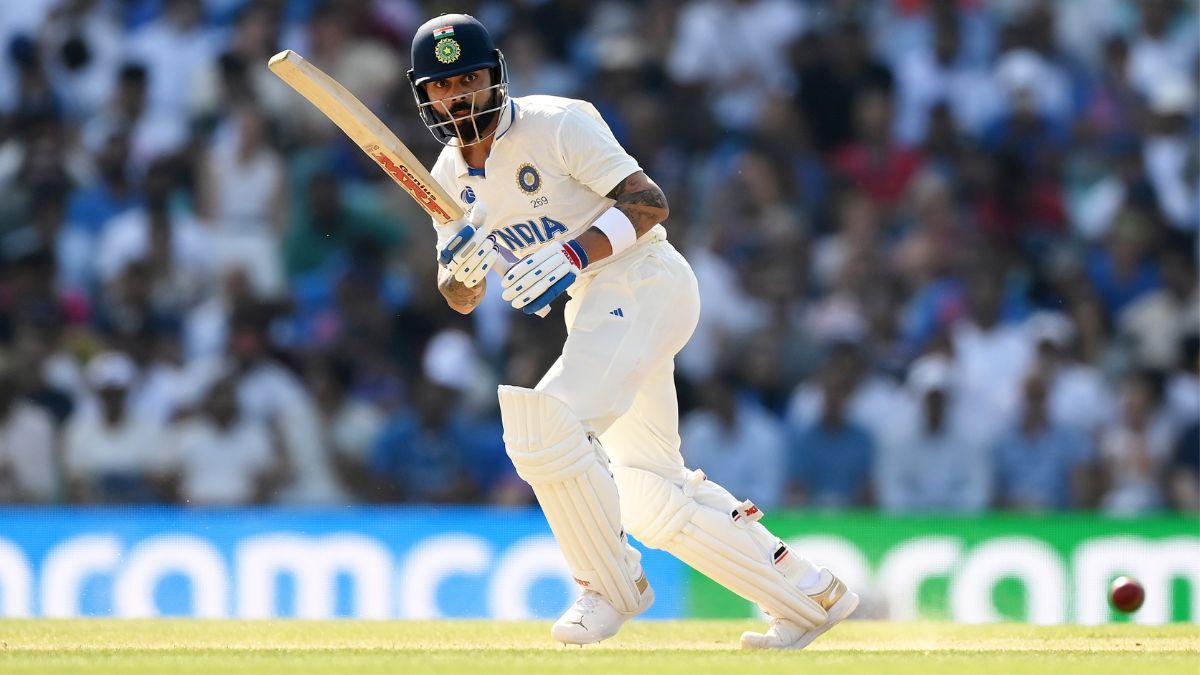The reverse sweep in cricket is a batting technique that has gained popularity among players seeking to surprise and outmaneuver the opposing team.
This innovative stroke involves a highly skilled manipulation of the bat, allowing the batsman to strike the ball with precision and redirect its trajectory towards an unexpected area of the field.
By deviating from traditional shot selections, such as the conventional sweep or drive, players can exploit gaps in field placements and disrupt opponents’ strategies.
This article explores the history, execution, advantages, disadvantages, and notable practitioners of this unconventional stroke.
- The reverse sweep provides additional scoring options for batsmen and targets areas less protected by fielders.
- It disrupts bowlers' rhythm, forces them to alter lengths or lines, and creates opportunities for batsmen to find boundaries.
- The reverse sweep requires skill and practice, but if executed well, it offers high rewards and an opportunity to score quickly.
- It is particularly effective against spinners and has historical significance as an innovative shot in the game of cricket.
History and Origins of the Reverse Sweep
The reverse sweep in cricket has its origins in the South Asian subcontinent, specifically in the 1970s. It is a variation of the traditional sweep shot, where the batsman uses an unconventional grip and changes his stance to play the shot.
The evolution of this shot can be attributed to the changing dynamics of limited-overs cricket during that time.
The reverse sweep has had a significant impact on the game and strategies employed by batsmen. It provides an additional option for scoring runs against spinners, especially when they are bowling outside off stump.
By using this shot, batsmen can effectively manipulate field placements and counteract spin bowlers’ plans.
Over time, several variations of the reverse sweep have emerged. Batsmen now employ different techniques and wrist positions to execute this shot with precision and power. These variations enhance their ability to hit boundaries and score quick runs during crucial phases of the game.
The reverse sweep has become an integral part of modern cricket batting techniques. Its usage requires skill, timing, and mastery over footwork.
In the following section, we will explore how to execute this stroke effectively without explicitly outlining each step involved in its execution.
How to Execute the Reverse Sweep
In order to successfully execute the reverse sweep in cricket, three key aspects must be considered: grip and stance, body position and movement, and timing and placement.
The grip and stance involve holding the bat with a cross-handed grip and adopting a slightly open stance towards the leg side.
Body position and movement require the batsman to bend their knees, lean forward, shift weight onto the front foot, and rotate their upper body towards the off side.
Grip and Stance
To execute a reverse sweep in cricket, players must adopt a specific grip and stance. The grip for the reverse sweep involves placing the bottom hand slightly lower on the handle of the bat, allowing for greater control and maneuverability. The top hand should be placed higher up on the handle to provide stability during the shot.
In terms of stance, the player should position themselves with their front foot pointed towards mid-wicket and their back foot angled towards point or cover-point.
Common mistakes in executing the reverse sweep include incorrect grip positioning, improper weight distribution, lack of wrist rotation, poor timing, and inadequate practice.
To improve grip and stance in the reverse sweep, players can engage in drills such as practicing with a shorter bat handle, using a tennis ball to focus on wrist movement, utilizing resistance bands for strength training exercises, visualizing successful execution before attempting it physically, and seeking guidance from experienced coaches or players.
By mastering these aspects of grip and stance, players can enhance their ability to effectively execute the reverse sweep.
Transitioning into body position and movement is crucial in ensuring successful execution of the reverse sweep without explicitly stating ‘step.’
Body Position and Movement
Body position and movement play a critical role in the successful execution of the reverse sweep shot in cricket. The proper body position is essential to maintain balance and control during the shot.
A low and wide stance with a slight bend in the knees allows for better stability and flexibility. The player’s weight should be evenly distributed on both feet, enabling quick movements in any direction.
Footwork is another crucial aspect of this shot. It involves taking small, controlled steps towards the off-side while maintaining balance and coordination. This footwork helps create sufficient space to swing the bat comfortably across the line of delivery.
By mastering these aspects of body position and footwork, players enhance their chances of executing an effective reverse sweep.
Transition into ‘timing and placement’ section:
Once the player has positioned their body correctly and made appropriate footwork adjustments, they can focus on perfecting their timing and placement for maximum effectiveness in executing this shot without any hesitation or delay.
Timing and Placement
Timing and placement are crucial factors to consider when executing the reverse sweep shot. They determine the success and effectiveness of the player’s shot. To achieve proper timing, players should focus on two key techniques.
- Footwork: The player needs to move quickly and get into position early. This allows them to have enough time to adjust their body position according to the length and line of the delivery.
- Hand-eye coordination: It is important for the batsman to watch the ball closely. They need to make split-second decisions on when and where to play the shot.
Common mistakes in timing include playing too early or too late. This can result in mistimed shots or missing the ball completely.
By mastering these timing techniques, players can effectively place their shots in areas that maximize scoring opportunities while minimizing risk.
This leads us to discuss further advantages and disadvantages of using the reverse sweep shot in cricket.
Advantages and Disadvantages of the Reverse Sweep
One advantage of the reverse sweep in cricket is that it allows the batsman to take advantage of gaps in the field and score runs.
The reverse sweep is a high-risk, high-reward shot that can be extremely effective if executed correctly. One of the pros of this shot is that it catches the fielders off guard, as they are typically positioned for conventional shots.
By playing the reverse sweep, batsmen can exploit vacant areas on the off side, where fielders are not positioned to stop runs.
Another advantage lies in its ability to disrupt bowlers‘ rhythm and plans. As bowlers often have specific lines and lengths they aim for, using variations like the reverse sweep forces them to readjust their strategy.
However, there are also some cons associated with this shot. It requires excellent hand-eye coordination and timing, as mistiming could lead to getting caught out or being hit on the pads resulting in a potential LBW dismissal.
Additionally, playing this shot consistently against top-quality spinners can be challenging due to their ability to vary pace and trajectory.
Moving forward into our discussion on famous players known for mastering the reverse sweep…
Famous Players Known for Mastering the Reverse Sweep
Notable players who have been highly proficient in executing the reverse sweep shot include those with extensive experience and a strong understanding of unconventional batting techniques.
These players have showcased their mastery of this shot, which has become increasingly popular in modern cricket due to its ability to surprise bowlers and manipulate field placements.
Technical Aspects:
- Grip and Stance: Players need to adjust their grip on the bat handle to enable them to execute a reverse sweep effectively. The stance also plays a crucial role as it allows for better balance during the shot.
- Timing and Footwork: Timing is crucial for the successful execution of the reverse sweep. Players must carefully judge the length and line of the delivery before committing to play the shot.
Impact in Modern Cricket:
- Scoring Opportunities: The reverse sweep provides batsmen with additional scoring options by targeting areas that are generally less protected by fielders.
- Bowler Disruption: This unorthodox stroke can disrupt bowlers’ rhythm, forcing them to alter their lengths or lines, thereby creating opportunities for batsmen.
Conclusion: Reverse Sweep
The reverse sweep in cricket has a rich history and origins. It is a shot played by batsmen to counter the spin of the ball.
To execute this shot, batsmen need to switch their grip and play the ball with an unconventional swing of the bat.
The reverse sweep comes with advantages such as confusing the bowler and creating new scoring opportunities, but it also carries risks like mistiming the shot or giving away easy catches. Famous players like Kevin Pietersen are known for mastering this shot.
In conclusion, the reverse sweep is a strategic yet risky maneuver that requires skill and precision. One interesting statistic related to the reverse sweep is its increasing popularity in recent years.
According to data from international matches, there has been a significant rise in the number of reverse sweeps played by batsmen since 2010.
This indicates that players are becoming more confident in using this unorthodox shot as part of their batting strategy, showcasing its effectiveness in modern cricket.
Frequently Asked Questions: Reverse Sweep
Are there any rules or restrictions on when a batsman can play the reverse sweep?
The reverse sweep shot in cricket can be effective in different formats of the game. However, there are no specific rules or restrictions on when a batsman can play this shot. Variations of the reverse sweep include the switch hit and paddle scoop.
Can the reverse sweep be played against any type of bowling, or is it more effective against certain types?
The reverse sweep is more effective against spinners than fast bowlers in cricket. Spinners provide a slower pace and the necessary flight for the batsman to execute this shot successfully, while fast bowlers pose a greater challenge due to their speed and bounce.
Is the reverse sweep considered a risky shot to play, and if so, why?
The reverse sweep in cricket is considered a risky shot due to its high level of difficulty and the potential for dismissal if not executed properly. However, it also has advantages, such as the element of surprise and the ability to score runs in unconventional areas.
Are there any specific techniques or tips for practicing and mastering the reverse sweep?
Practical drills such as practicing with a tennis ball or using a batting machine can help improve reverse sweep technique. Common mistakes include mistiming the shot and not getting into proper position.
Are there any instances where playing the reverse sweep would not be recommended, even for a batsman who has mastered the shot?
The reverse sweep may not be recommended for a batsman who has mastered the shot in certain situations, such as when the ball is turning sharply or when there is a risk of getting caught. Compared to other unconventional shots in cricket, the reverse sweep requires more skill and precision.











